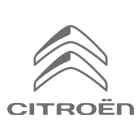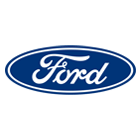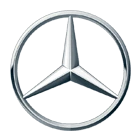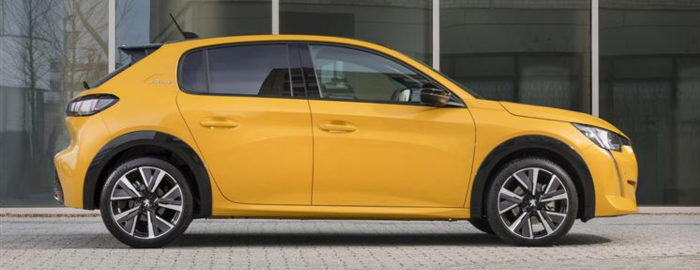
Types of Car Paint
When it comes to cars, the visual appeal of their paintwork is paramount in capturing attention and leaving a lasting impression. The world of car paint types is a fascinating realm where science meets artistry, with each type offering unique characteristics and visual effects. Car paint serves as both a protective layer and an artistic expression, reflecting the personality and taste of its owner.
In this blog, GB Vehicle Leasing will explore the types of car paint, from popular finishes like solid colours and metallics, to the latest trends in advanced technologies. As we move forward, we will explore the importance of proper car paint maintenance and share practical tips to help you keep your vehicle looking showroom-worthy for years to come.
Solid Paint
Solid car paint refers to a type of automotive paint finish that is uniform in colour and does not contain any special effects or textures. It is often offered as a standard option on most vehicles, excluding luxury cars, making it the most economical choice among paint options. It is commonly available in popular colours such as white, black, blue, and various shades in between.
Differentiating solid paint from other types of paint is relatively simple. Solid car paint is typically a single-stage application, meaning that the colour and protective clear coat are combined in a single layer. While some drivers prefer the shinier finishes offered by Metallic and Pearlescent paint, solid paint still provides a cool and appealing look.
Popular cars and their solid paint options include the Audi A3 in Solid - Brilliant black, Volkswagen Golf in Solid - Urano grey and Citroen C4 in Solid - Polar white. As you can see, solid paint options vary depending on the manufacturer. It can be a good idea to see these colours firsthand in order to decide if a solid paint meets your preferences.
Metallic Paint
Metallic paint is a popular paint type which contains small metallic flakes or particles. These particles, often made of aluminium or other metals, create a shimmering effect when light hits the painted surface. The metallic flakes reflect and refract light, giving the paint a distinct appearance that is different from standard solid or non-metallic colours.
To achieve the metallic effect, metallic paint is typically applied in multiple layers. A base coat is first applied, usually a solid colour, followed by a clear coat that contains the metallic particles. The clear coat allows the metallic flakes to be suspended and evenly distributed, giving the paint its characteristic shimmer. The final result is a glossy and reflective finish with a metallic appearance.
It's worth noting that metallic paints tend to highlight dirt more than solid finishes. Each manufacturer has their own selectin of metallic car paints available. For example, the Audi Q2 has over five metallic paint options such as Metallic - Mythos black and Metallic - Navarra blue. Metallic paints tend to be a cost option when choosing a new car.
Pearlescent Paint
Pearlescent car paint, also known as pearl paint, creates a unique visual effect resembling the appearance of a pearl surface. Unlike metallic paint, which contains metallic flakes, pearlescent paint contains small ceramic or synthetic mica particles that reflect and refract light in a different manner. The pearlescent effect is often described as a soft, shiny appearance, giving the car’s surface an eye-catching quality.
The pearlescent effect is achieved by adding translucent layers of paint with special pigment particles to the base colour coat. These pigment particles are designed to interact with light, creating a shimmering, multi-dimensional effect. The result is a paint finish that appears to change colour or exhibit different shades when viewed from various angles.
Like metallic paint, pearlescent paint may require additional care and maintenance compared to solid colours. Also, the unique finish can make scratches or imperfections more noticeable. When applying pearlescent paint, multiple layers are typically required to achieve the desired effect. A popular example is the Audi Q5 in Pearl - Daytona grey.
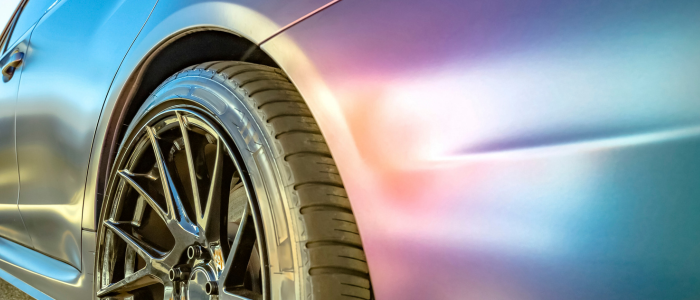
Matte Paint
Matte car paint, also known as non-gloss paint, is a type of vehicle paint that creates a smooth, non-reflective, and velvety appearance on the surface of a car. Unlike traditional glossy finishes, matte paint has a low sheen or no shine at all, giving the vehicle a distinctive and understated look. One of the main attractions of matte paint is its unique aesthetic appeal.
Matte paint is achieved by using a different formulation and application technique compared to glossy finishes. The paint contains a higher concentration of solid particles, such as silica or other additives, that scatter light rather than reflect it. This scattering of light creates the matte effect by diffusing the reflection, resulting in a flat appearance. Matte finishes are often chosen by car enthusiasts looking for a non-traditional and bold look for their vehicles.
Repairing or repainting matte paint can be challenging as matching the exact texture and appearance of the original matte finish is difficult. Overall, matte car paint provides a unique and distinctive look which you either love or hate. With car leasing, we find matte car paint less desirable than metallic, however it is available on some cars like the Cupra Formentor in Special matt - Petrol blue.
Why is car paint maintenance important?
Car paint maintenance is important for several reasons:
Appearance: The paint of a car is a highly visible and defining characteristic. By engaging in regular maintenance, you can preserve the paint's color, shine, and overall look, ensuring that your vehicle remains attractive and well-kept.
Protection: The paint acts as a protective shield, safeguarding the car's body panels from external elements. It shields the metal from UV rays and dirt that may cause damage over time. Regular maintenance, such as washing and waxing, is essential to maintain the paint's integrity.
Damage Prevention: By conducting regular maintenance, you can proactively detect and resolve minor paint issues early on, such as small chips, scratches, or paint defects. By taking prompt action, you can prevent these issues from escalating into more costly problems.

Top Tips
To help you keep your vehicle looking showroom-worthy for years, here are some practical tips:
Regular Washing: Wash your vehicle on a regular basis to remove dirt, dust, and road grime. Avoid using harsh detergents or household cleaners that can strip the paint or cause damage.
Protect from the Elements: Whenever possible, park your vehicle in a covered or shaded area to minimise exposure to sunlight, rain, and other environmental elements.
Avoid Abrasive Materials: Use soft microfiber cloths, sponges, or mitts for cleaning. Avoid using abrasive materials like rough brushes or scrubbers that can leave scratches on the car paint surface.
Regular Inspections: Take the time to inspect your vehicle's paint regularly. Look for any chips, scratches, or signs of damage. Addressing such issues early on can prevent them from worsening or becoming more noticeable.
Avoid Harsh Chemicals: Avoid using harsh chemicals, solvents, or abrasive cleaning agents on the car paint.
By following these practical tips and investing in regular maintenance, you can help preserve your vehicle's appearance and protect its paint for years to come. If you’ve found this article interesting, visit our Facebook page for more tips and motoring advice. Also, view our related article - What is AdBlue?
About The Author: Charlotte Kennedy
Charlotte joined the GB Vehicle Leasing team around 6 years ago starting out as an apprentice and is now being a key member of our marketing team.
Find Out More About CharlotteLatest Posts

Volkswagen Taigo vs T-Roc: How Do They Compare
Here, we explore how they compare...

Skoda Elroq Review 2025
Buckle up, folks! This new Skoda...

Pre-Registered Vehicles Explained
Learn what a pre-registered vehicle is...

Hyundai Inster Review 2025
Move over, conventional cars! The Hyundai...

Vehicle Delivery Lead Times Explained
From custom factory orders to in...



